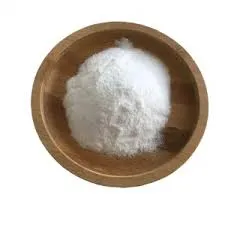Cationic Polymers in Water Treatment An Overview
Water treatment is an essential process aimed at removing contaminants from water to ensure it meets safety standards for human consumption, industrial uses, and ecological health. Among the various treatment methods, the use of cationic polymers has gained significant attention due to their effectiveness in enhancing the removal of suspended solids, organic matter, and other pollutants.
What are Cationic Polymers?
Cationic polymers are positively charged macromolecules that can interact with negatively charged particles found in water. These polymers can be synthetic or natural, with applications ranging from flocculation and coagulation to sludge dewatering and disinfection. Their high molecular weight and charged nature allow them to bind with particles to form larger aggregates, which can then be easily removed from the water through sedimentation or filtration.
Mechanism of Action
The effectiveness of cationic polymers in water treatment is primarily based on two mechanisms charge neutralization and polymer bridging.
1. Charge Neutralization Many contaminants in water, including colloids and organics, carry a negative charge. Cationic polymers, with their positive charge, can neutralize the charge of these contaminants, effectively destabilizing them. Once destabilized, the particles are more likely to agglomerate and settle out of the water, enhancing the clarity of the treated water.
2. Polymer Bridging When cationic polymers are added to water, they can extend across multiple particles, physically linking them together. This bridging effect leads to the formation of larger flocs that are easier to separate from the water column, facilitating their removal through sedimentation and filtration processes.
Applications in Water Treatment
cationic polymer used in water treatment

Cationic polymers have diverse applications in various water treatment processes, particularly in municipal water supply systems, industrial wastewater treatment, and sludge management. Some specific uses include
- Flocculation and Coagulation Cationic polymers are commonly used as flocculants and coagulants in treatment plants to assist in the removal of suspended solids, algae, and organic materials. They have proven effective at improving the efficiency of the sedimentation process, thereby enhancing overall water quality.
- Sludge Dewatering In wastewater treatment, the dewatering of sludge is a critical process to reduce volume and facilitate disposal. Cationic polymers enhance the dewatering process by promoting floc formation, which results in a more solid state that is easier to remove from treatment facilities.
- Pulp and Paper Industry The pulp and paper industry utilizes cationic polymers to remove wood fibers and other impurities from water used in the production process. This not only helps in producing cleaner water but also aids in the recycling of process water, leading to reduced water consumption.
- Oil and Grease Removal Cationic polymers have also been employed in the treatment of oily wastewater, where they aid in the separation of oil from water, providing a more efficient method of cleaning industrial effluents.
Advantages and Challenges
The use of cationic polymers in water treatment offers several advantages, including enhanced removal efficiency, improved water quality, and the possibility of reducing chemical usage compared to traditional treatment methods. However, challenges remain. The potential for residual polymer in treated water raises concerns about environmental impact and regulatory compliance. Additionally, the cost of cationic polymers can be a limiting factor for some smaller treatment facilities.
Conclusion
In conclusion, cationic polymers play an integral role in modern water treatment practices. Their ability to effectively remove contaminants through charge neutralization and polymer bridging makes them a valuable asset in achieving clean, safe water. As technologies and formulations advance, research continues to explore innovative applications and formulations to overcome existing challenges, ensuring that cationic polymers remain a cornerstone of water treatment processes for years to come. The future of water treatment is likely to harness the full potential of these polymers, contributing to more sustainable and efficient treatment solutions.

